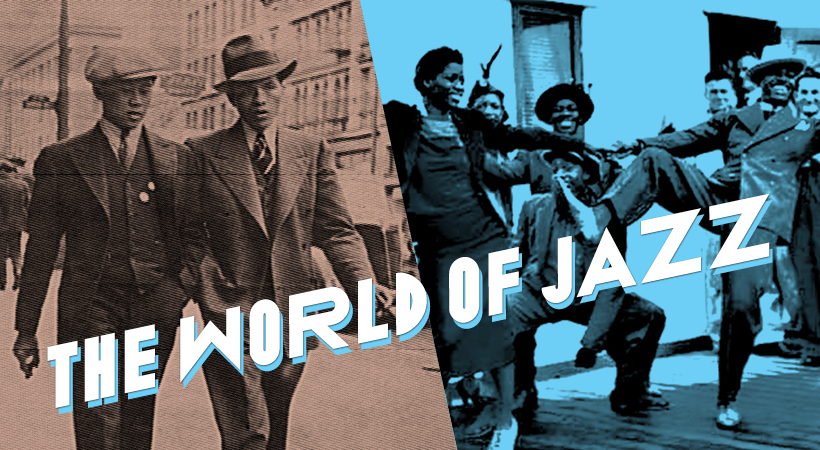
The World of Jazz
May 16, 2017—The world of Jazz—the novel and this play—begins with musical form winding its way through the characters and their very thoughts and words. Harlem is the setting of this dance. In life and in art it is a place like no other.

"I wanted to recreate a migratory experience, an immigrant’s experience of movement to cities, when they were the places to go, when there were, as you say, infinite possibilities. Seeing oneself in numbers, so that you felt the security of one’s own family or kind. "
—Toni Morrison on Jazz, BBC Interview with Salman Rushdie
From Jazz:
“Breathing hurts in weather that cold, but whatever the problems of being winterbound in the City they put up with them because it is worth anything to be on Lenox Avenue… Get on the streetcar, give the man the nickel, and ride anywhere you please, although you don’t want to go many places because everything you want is right where you are.”
—Toni Morrison
"Negroes at every turn; up and down Lenox Avenue, up and down One Hundred and Thirty-fifth Street; big, lanky Negroes, short, squat Negroes; black ones, brown ones, yellow ones; men standing idle on the curb, women, bundle-laden, trudging reluctantly homeward, children rattle-trapping about the sidewalks; here and there a white face drifting along, but Negroes predominantly, overwhelmingly everywhere. There was assuredly no doubt of his whereabouts. This was Negro Harlem."
—Rudolph Fisher, “City of Refuge”
(published in The Atlantic, 1925)

"What I was interested in was the concept of jazz, the jazz era, what all of that meant before it became appropriated and redistributed as music throughout the world. What was jazz when it was just music for the people, and what were those people like? …The only thing that’s consistent in the debate is the nature of improvisation—that one works very hard in order to be able to invent. It was that quality in these people’s lives that I wanted to capture, moving from the South on into a city, where there were endless possibilities, of both security and danger."
—Toni Morrison, BBC Interview with Salman Rushdie (1992)
"They caught the subway train for Harlem. Arrived there they gravitated to the Congo…They danced, Rose and the boy. Oh, they danced! An exercise of rhythmical exactness for two. There was no motion she made that he did not imitate. They reared and pranced together, smacking palm against palm, working knee between knee, grinning with real joy. They shimmied, breast to breast, bent themselves far back and shimmied again…And the pianist! At intervals his yellow eyes, almost bloodshot, swept the cabaret with a triumphant glow, gave the dancers a caressing look, and returned to the ceiling. Lean, smart fingers beating barbaric beauty out of a white frame. Brown bodies, caught up in the wild rhythm, wiggling and swaying in their seats."
—Claude McKay, Home to Harlem (1928)
The rhythm of life
Is a jazz rhythm,
Honey.
The gods are laughing at us.
The broken heart of love,
The weary, weary heart of pain,—
Overtones,
Undertones,
To the rumble of street cars,
To the swish of rain.
Lenox Avenue,
Honey.
Midnight,
And the gods are laughing at us.
— Langston Hughes, Lenox Avenue: Midnight (1927)



